INDIAN ARMED FORCES CHIEFS ON OUR RELENTLESS AND FOCUSED PUBLISHING EFFORTS

The insightful articles, inspiring narrations and analytical perspectives presented by the Editorial Team, establish an alluring connect with the reader. My compliments and best wishes to SP Guide Publications.

"Over the past 60 years, the growth of SP Guide Publications has mirrored the rising stature of Indian Navy. Its well-researched and informative magazines on Defence and Aerospace sector have served to shape an educated opinion of our military personnel, policy makers and the public alike. I wish SP's Publication team continued success, fair winds and following seas in all future endeavour!"

Since, its inception in 1964, SP Guide Publications has consistently demonstrated commitment to high-quality journalism in the aerospace and defence sectors, earning a well-deserved reputation as Asia's largest media house in this domain. I wish SP Guide Publications continued success in its pursuit of excellence.
- MoD initiates comprehensive review of Defence Acquisition Procedure 2020, pushes for defence reforms
- G7: The Swansong
- Kalinga Connect: South Asia to Polynesia
- Must Credit DRDO for Operation Sindoor, now what is next for defence R&D?
- The layered Air Defence systems that worked superbly, the key element of Operation Sindoor
- Operation Sindoor | Day 2 DGMOs Briefing
- Operation Sindoor: Resolute yet Restrained
India's Operation Sindoor Sends a Clear Message to Terror and the World – ‘ZERO TOLERANCE’
Women in command - Col. Sofiya Qureshi and Wg Cdr Vyomika Singh take centre stage to brief the media after precision strikes
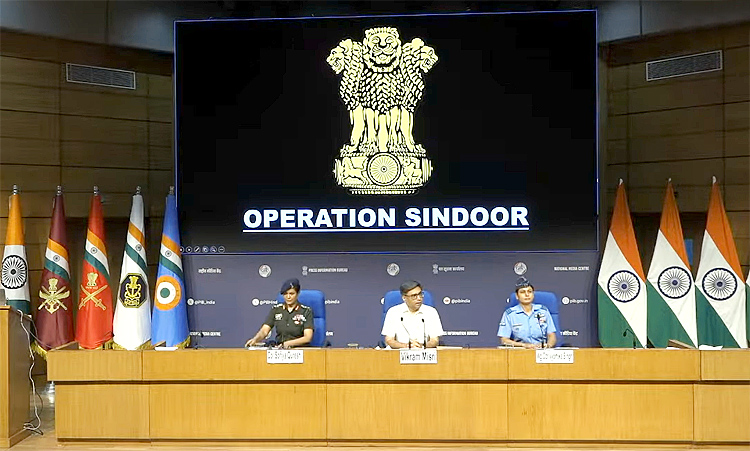
In the early hours of May 7, the Indian Armed Forces launched a precise and measured military response against cross-border terrorism. Codenamed Operation Sindoor, the mission targeted nine terrorist infrastructure sites across Pakistan and Pakistan-occupied Jammu and Kashmir (PoJK), delivering a clear message: India will not stand idle in the face of terror.
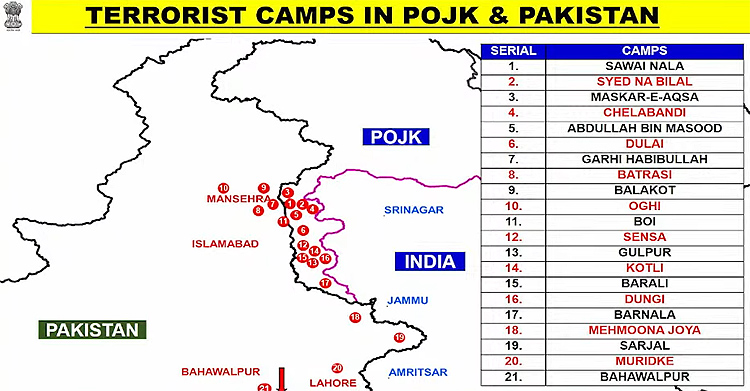
Terrorist Infrastructure Sites targeted under Operation Sindoor
- Markaz Subhan Allah, Bahawalpur – JeM
- Markaz Taiba, Muridke – LeT
- Sarjal, Tehra Kalan – JeM
- Mehmoona Joya, Sialkot – HM
- Markaz Ahle Hadith, Barnala – LeT
- Markaz Abbas, Kotli – JeM
- Maskar Raheel Shahid, Kotli – HM
- Shawai Nalla Camp, Muzaffarabad – LeT
- Syedna Bilal Camp, Muzaffarabad – JeM
What made this operation different wasn't just the accuracy of the strikes or the intelligence behind them. It was who addressed the world afterward. Standing beside Foreign Secretary Vikram Misri were Colonel Sofiya Qureshi and Wing Commander Vyomika Singh, two experienced women officers in the Indian Army and Air Force respectively. Together, they delivered the government's official statement on the operation, marking a powerful shift in how India projects its military resolve.
Codenamed Operation Sindoor, the mission targeted nine terrorist infrastructure sites across Pakistan and Pakistan-occupied Jammu and Kashmir (PoJK), delivering a clear message: India will not stand idle in the face of terror
The operation came days after the brutal April 22 terror attack in Pahalgam region, which claimed the lives of 26 civilians, including a Nepali national. The probe into the attack revealed clear links to Pakistan-based terrorist outfits. The Indian response was swift and strategic, aimed at dismantling launch pads and logistical bases used by terrorists.


According to unconfirmed sources, backed by solid intelligence and surveillance, the strikes were carried out using Rafale fighter jets equipped with SCALP cruise missiles and AASM Hammer precision-guided bombs. These weapons allowed deep penetration into hostile territory with minimal risk of collateral damage. Importantly, no Pakistani military installations or civil bases were targeted, reinforcing India's intent: to fight terrorism, not provoke conflict.
The Briefing was a Statement in Itself
The presence of women officers, Col. Qureshi and Wg Cdr Singh at the media briefing was no coincidence. Their calm, clear, and confident delivery wasn't just informative – it was symbolic. It reflected a new era where India's armed forces are represented by competence and clarity, regardless of gender.
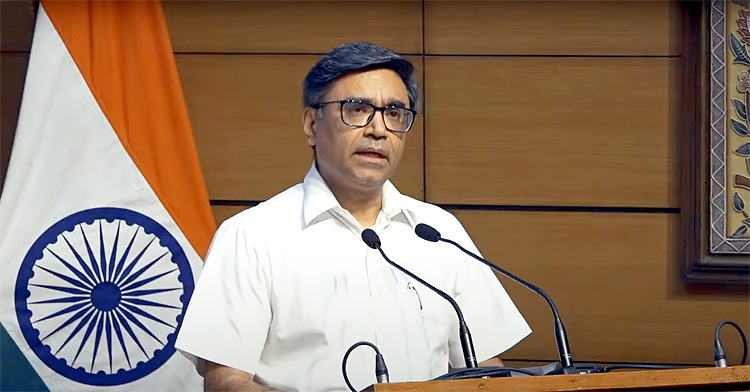
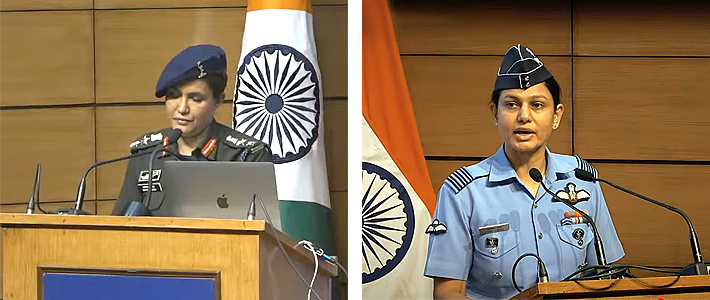
"These were targeted strikes against terrorist infrastructure. We operated with precision and restraint," said Col. Qureshi.
"Operation Sindoor was not just about retribution. It was about deterrence and delivering justice to those responsible," added Wing Commander Singh.
Standing beside Foreign Secretary Vikram Misri were Colonel Sofiya Qureshi and Wing Commander Vyomika Singh, two experienced women officers in the Indian Army and Air Force respectively
Both officers are well-respected within military circles. Col. Qureshi has a record of leadership in infantry operations and international deployments, while Wg Cdr Singh brings deep operational experience from the Air Force's intelligence and mission planning divisions.
The Name and What It Stands For
The operation's name, Sindoor, draws from deep Indian cultural identity. Sindoor, the vermillion powder applied by married women on their foreheads, symbolizes matrimony and the sanctity of commitment. The Prime Minister personally chose this name for the retaliatory strike, signalling a deliberate and resolute response following the tragic murder of innocent civilians.
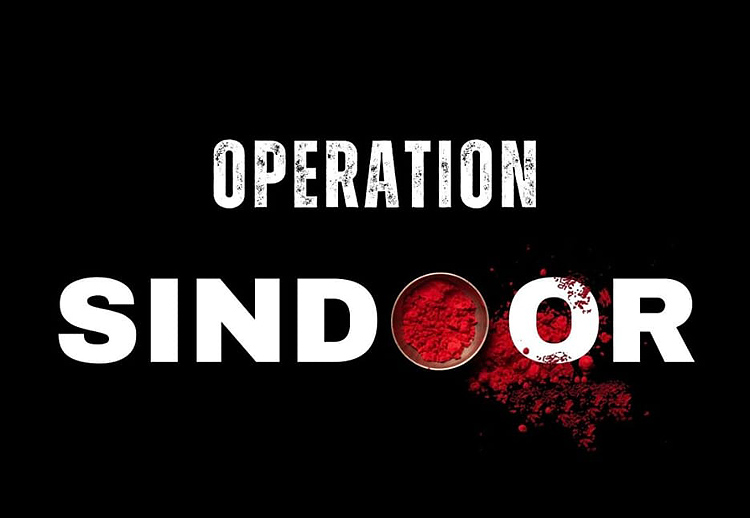
Despite mounting evidence, Pakistan denied involvement, following its usual playbook of dismissals and counter-accusations. Meanwhile, Indian agencies have compiled a dossier tracing the attackers' movements and handlers, with inputs from eyewitnesses, intercepted communication, and satellite monitoring.
The operation aligns with the UN Security Council's April 25 statement calling for accountability for the perpetrators and financiers of the Baisaran attack. The world must exercise zero tolerance. India's action was in line with international expectations for proportionate and lawful responses to terrorism.
The Prime Minister personally chose this name for the retaliatory strike, signalling a deliberate and resolute response following the tragic murder of innocent civilians
More than a military success, Operation Sindoor has reshaped how India communicates its defence posture. Operation Sindoor may be remembered as a textbook case of a precise and effective military response to terror. But it will also be remembered for the image that followed: two officers, speaking not just for a mission, but for a nation. India didn't just strike back. It stepped forward–with resolve, dignity, and the voice of its daughters in uniform.
Pakistan-Linked Terror Attacks in India
| Year | Attack | Location | Casualties | Key Pakistan Link |
|---|---|---|---|---|
| 2001 | Indian Parliament Attack | New Delhi | 9 killed 18 injured |
Jaish-e-Mohammed and LeT involvement |
| 2002 | Akshardham Temple Attack | Gandhinagar, Gujarat | 31 killed 80 injured |
Pakistani-based LeT operatives |
| 2008 | 26/11 Mumbai Attacks | Mumbai, Maharashtra | 164 killed 300 injured |
Lashkar-e-Taiba operatives from Pakistan |
| 2016 | Uri Army Base Attack | Uri, Jammu & Kashmir | 20 killed (soldiers) 21 injured |
Jaish-e-Mohammed, infiltrated from PoJK |
| 2019 | Pulwama Suicide Bombing | Pulwama, J&K | 40 killed (CRPF) 5 injured |
Jaish-e-Mohammed claimed responsibility |
| 2025 | Pahalgam (Baisaran) Terror Attack | Baisaran, J&K | 26 killed 17 injured |
Resistance Front, backed from Pakistan |





